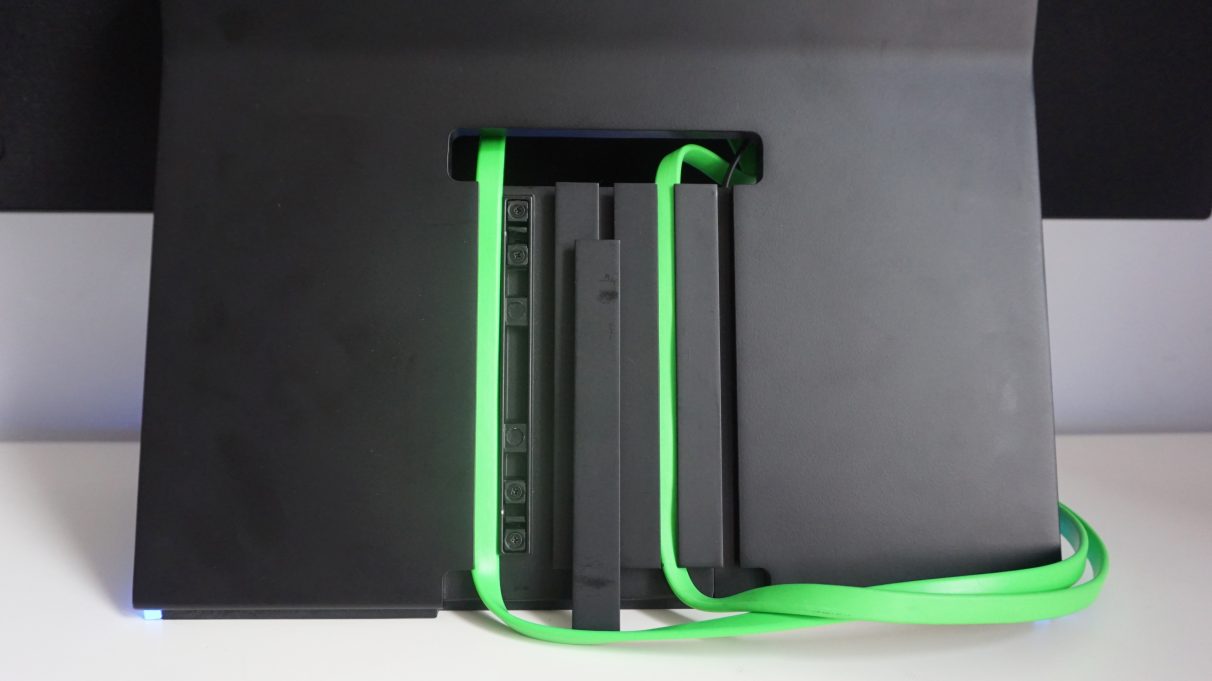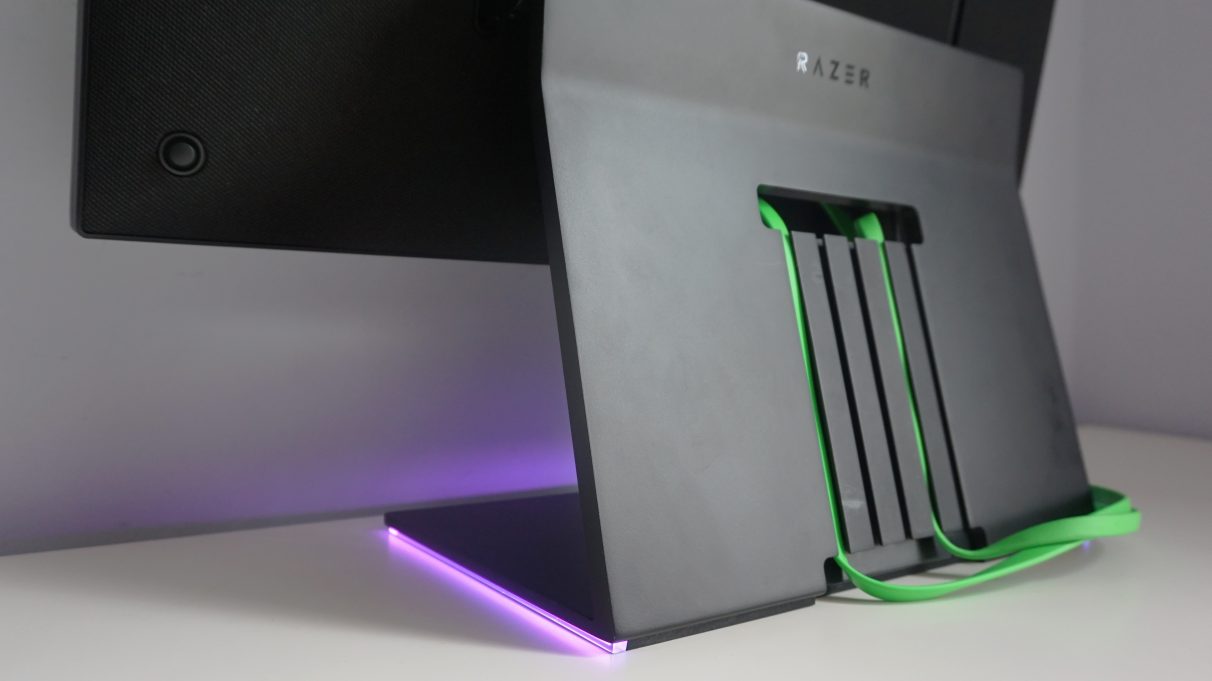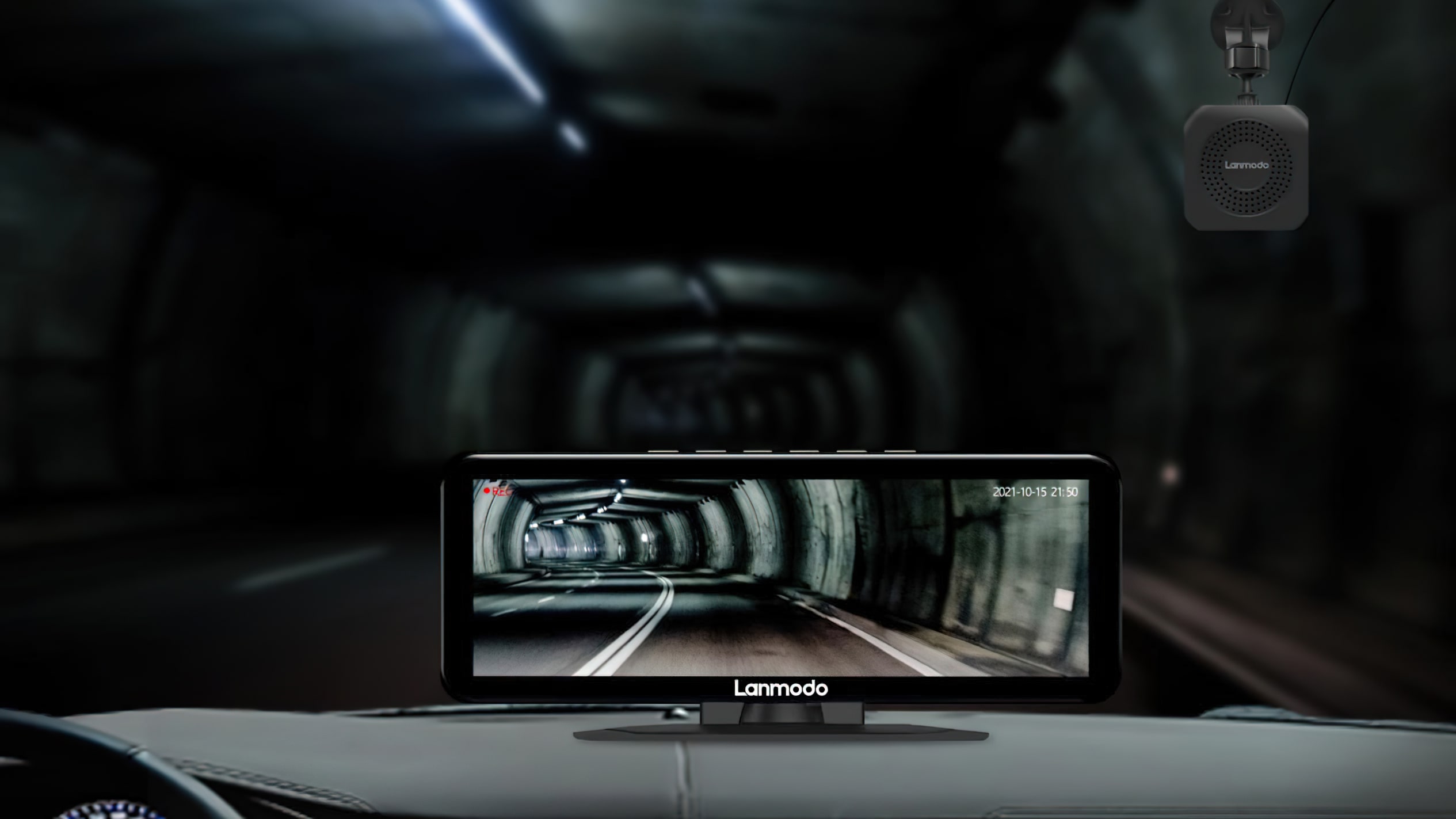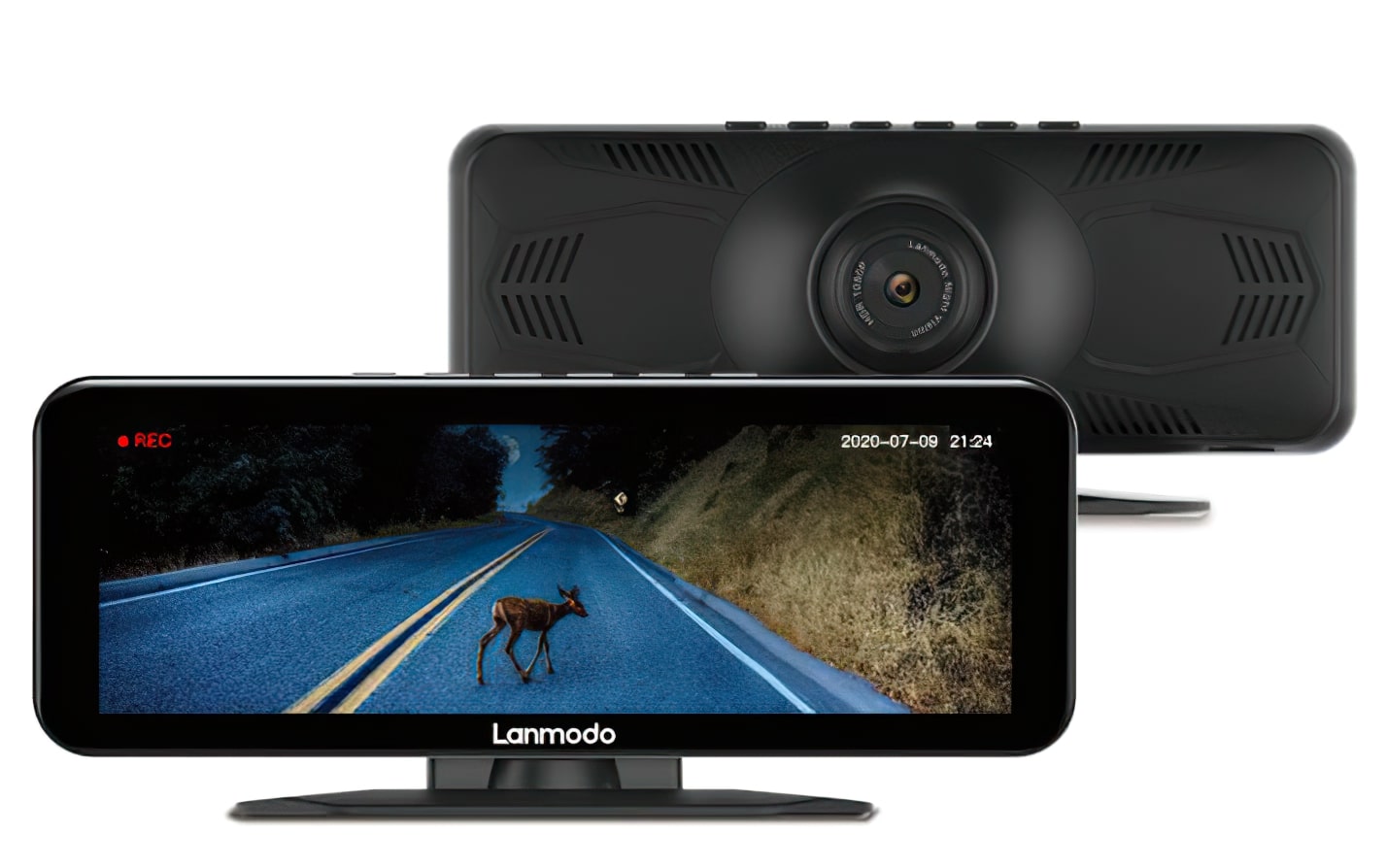
It’s been a very long time coming, however Razer’s Raptor 27 monitor is lastly right here – and hoo boy does it impress. When I first noticed the prototype of this 27in, 2560×1440, 144Hz, FreeSync display screen at CES final yr, I oohed and ahhed at its putting design, steel cable tidies and fabric-wrapped show. Now, having examined the ultimate mannequin over the previous couple of weeks, I’ve been making precisely the identical noises at its pretty IPS panel. Not solely is it one of the colour-accurate 1440p screens you should purchase in the present day, however it’s additionally bought correct HDR assist and has been totally licensed by Nvidia as a G-Sync Compatible show. Is it sufficient to interrupt into our best gaming monitor record, although? Here’s wot I believe.
In phrases of image high quality, the Razer Raptor is true up there with my present greatest 1440p monitor picks, the AOC Agon AG273QX and the MSI Optix MAG272CQR, providing deep, vibrant colors straight out of the field. When I examined the monitor on its default settings with the brightness set to 100%, for instance, my X-Rite i1 DisplayPro calibrator returned a virtually excellent sRGB color gamut protection results of 99.9%.
Even extra spectacular, nonetheless, was its DCI-P3 color gamut protection rating of 93.6%. Whereas the sRGB gamut is used to check a monitor’s basic color accuracy, the broader DCI-P3 gamut is used to measure a monitor’s HDR chops. Now, a variety of high-end HDR screens must hit no less than 90% of this gamut to satisfy numerous trade requirements and VESA specs, so the truth that the Razer Raptor’s protection is nicely over this determine is sweet information certainly – particularly when VESA’s DisplayHDR commonplace doesn’t technically require a monitor to hit any sort of DCI-P3 protection in any respect.
In truth, it’s one of many highest DCI-P3 scores I’ve seen for some time, as even the AOC Agon AG273QX (which can also be a VESA DisplayHDR 400 licensed show) solely covers round 88% of the gamut, as does the MSI Optix MAG272CQR. Whether you’ll discover that additional 5% is up for debate, in fact (most likely not if I’m being fully sincere, as colors nonetheless look fairly rattling high quality on all three of those gaming screens), however if you wish to make sure you’re getting the best possible of the most effective, then it’s most likely truthful to say that the Razer Raptor goes above and past most of its 1440p competitors.
I additionally recorded a stunning excessive distinction ratio of 1174:1 on the Raptor, making certain plenty of element in darker, shadowy scenes in games and pictures, in addition to a peak brightness of 357cd/m2 with HDR turned off (which is greater than sufficient for on a regular basis use), and round 470cd/m2 with HDR turned on. The latter is roughly in keeping with the AOC and MSI, and packs an affordable sufficient punch when enjoying games in HDR, however it’s not fairly the eye-searing expertise you’ll discover on different high-end HDR screens resembling Nvidia’s 1000cd/m2 G-Sync Ultimate screens.

Getting the cables to lie fully flat of their respective grooves could be a bit difficult, however fortuitously every plate fixture could be simply popped on and off once more when attaching new cables.
Still, in need of paying 1000’s of kilos / {dollars} for that sort of HDR expertise, the Raptor nonetheless does a fairly good job with it regardless – particularly when it doesn’t contain hours of faff getting it to work, both. It’s not fairly as hassle-free because the AOC Agon AG273QX, which simply labored straight off the bat, however the Raptor undoubtedly concerned much less faff than a variety of different HDR screens I’ve examined just lately.
Indeed, all I wanted to get it working correctly in Assassin’s Creed Odyssey, for instance, was to ensure the HDR choice within the Gaming part of the Raptor’s onboard menu was switched on. Left off, the display screen appeared horribly washed out while you’ve solely bought the in-game HDR enabled, so make it possible for’s turned on always when enjoying in HDR. For Final Fantasy XV, nonetheless, I needed to swap on Windows’ HDR settings earlier than the game’s HDR luminance menu turned obtainable. Still, it was pretty painless all informed, and each game I attempted with HDR seemed very fairly certainly.

The Razer Raptor comes with an honest collection of ports, together with one HDMI 2.0b enter, one DisplayPort 1.four enter, a USB-C port and two USB3.2 Gen 1 ports.
The solely mildly disappointing factor in regards to the Razer Raptor was its common black ranges. Measuring 0.30cd/m2 based on my calibrator, that’s fairly excessive for an IPS show and greater than double what you’ll get on the AOC. It’s not the tip of the world, all informed, as darker areas of the display screen nonetheless seemed fairly deep and inky in games and pictures alike, however it’s nonetheless a little bit of a disgrace contemplating how good the remainder of its panel is.
Either approach, there’s loads to love in regards to the Razer Raptor, each when it comes to its panel and its wider design. I’m nonetheless very a lot in love with its rear cable grooves, for instance, and I’m happy to see the little plates holding every of its lime inexperienced cables in place are a lot simpler to pop on and off than they had been on the prototype mannequin I noticed final yr. Sure, you’ll most likely by no means see it when you’ve bought the monitor arrange, however simply understanding they’re all neatly aligned around the again nonetheless brings me a variety of satisfaction. The similar goes for the material on the again of the monitor, too. You’re not going to see or contact it fairly often, however it does make reaching for its onboard menu management around the again only a bit extra nice than regular.

The rear of the Razer Raptor 27 is roofed in black cloth, giving it a premium really feel in comparison with the plastic chassis of its numerous rivals.
Alas, all these additional particulars do come at fairly a value in comparison with different 1440p gaming screens. Whereas the AOC Agon AG273QX presently prices £400, for instance, the Raptor chucks one other £300 on prime of that, going for £699 / $699 at time of writing. That’s a lot for a monitor like this, particularly when lots of in the present day’s bigger, ultrawide screens go for roughly the identical sort of worth. Heck, I may most likely perceive it if the Raptor was a correct Nvidia G-Sync monitor, as the price of including Nvidia’s proprietary G-Sync chip, plus Razer’s RGB Chroma lighting and all of its numerous design gubbins would undoubtedly crank up its worth fairly a bit in comparison with its AMD Freesync rivals.
But this isn’t a correct G-Sync show – it’s a Freesync one which’s simply G-Sync Compatible, which is Nvidia’s approach of claiming that the monitor’s built-in variable refresh fee expertise (which robotically matches your monitor’s refresh fee to the variety of frames being spat out by your graphics card for clean, tear-free gaming) will present simply nearly as good an expertise on Nvidia graphics playing cards as it would on AMD ones.
Technically, all Freesync screens are G-Sync suitable (with a small ‘c’) – it’s simply those with an enormous ‘C’ Compatible that Nvidia have licensed internally. Indeed, the AOC Agon AG273QX isn’t an official G-Sync Compatible show (but), however I had no downside in any respect getting its variable refresh fee tech to work with my Nvidia graphics card. As such, there’s no actual must pay a lot additional for an enormous ‘C’ Compatible show, as there are many different screens on the market that supply the identical expertise for lots much less.

Of course, it wouldn’t be a Razer monitor with out a little bit of Chroma RGB lighting around the aluminium base now, wouldn’t it?
As a outcome, it’s exhausting to advocate the Razer Raptor when the AOC Agon AG273QX (and the MSI Optix MAG272CQR, for that matter) is a lot cheaper. As a lot as I like the Raptor’s design and every part happening around the again, demanding one other £300 for it’s a massive ask, particularly when a variety of its greatest options aren’t one thing you’ll really see day-to-day. As that previous saying in Jurassic Park goes, it might appear Razer “had been so preoccupied with whether or not or not they may, they didn’t cease to suppose in the event that they ought to“.
Ultimately, there’s no denying the Razer Raptor 27 is a unbelievable gaming monitor – and absolutely the king of all 1440p, 144Hz HDR screens I’ve examined up to now – however at its present worth of £699 / $699 it’s simply far too costly for what it’s. For my cash, I’d stick to the £400 AOC Agon AG273QX if you could find it (as US inventory ranges proceed to be a bit on the low aspect), or go for the £399 / $400 MSI Optix MAG272CQR for those who’re much less fussed about having a monitor that may do HDR.



